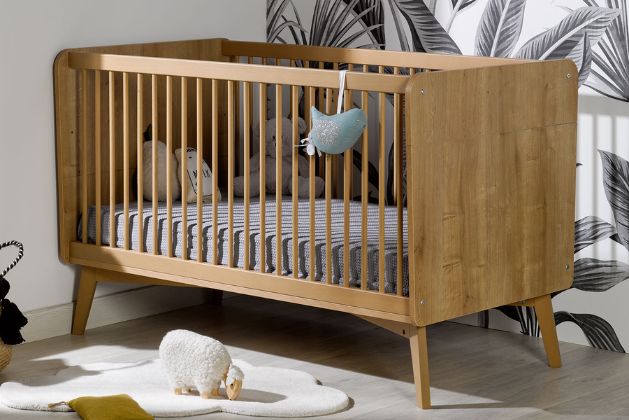The Baby Crib with Bars
Categories:
Baby's Room
 Choosing the right baby blanket dimensions according to season and age
Choosing the right baby blanket dimensions according to season and age
 How to attach a headboard (with or without drilling): quick and effective soluti
How to attach a headboard (with or without drilling): quick and effective soluti
 Waterproof sheet or mattress protector: the best solution by age group
Waterproof sheet or mattress protector: the best solution by age group
 27 Original, Useful, and Trendy Christmas Ideas for Teens 2025
27 Original, Useful, and Trendy Christmas Ideas for Teens 2025
 Christmas Activities for Baby: Creative Ideas for Home & Daycare
Christmas Activities for Baby: Creative Ideas for Home & Daycare
Choosing a baby crib is crucial for your baby's comfort and safety. Among the different possibilities, the crib is the most classic and popular choice among parents furnishing their child's room. You can invest in a crib from your baby's 3 months, after spending the first nights in a bassinet.
Your child can sleep in this crib until they are 3 years old and even longer if you choose a convertible baby bed. Learn more with us about this essential and timeless little bed.

A baby crib is a bed specially designed for babies and toddlers. It consists of a frame with vertical slats to keep the baby safe in bed while allowing sufficient air circulation. The slats are spaced 5 to 7 cm apart to prevent the baby from passing through.
The crib is generally made of wood, its dimensions are most often 70x140 cm, but we also find beds in 60x120 cm.
The crib has an adjustable bed base with two or three heights depending on the model to allow you to put your child to bed without hurting your back. You can find convertible cribs that will help you make the transition between the baby crib and the big kid bed safely.
Baby cribs have several advantages, both for babies and parents:
Safety: the slats ensure the baby's safety during sleep. The spacing of each slat prevents the baby from falling or getting their head and arms stuck.
Practicality: the adjustable bed base makes the crib very clever and highly appreciated by parents.
Durability: often made of wood, cribs are solid and last for years.
Convertible: several crib models are convertible and thus accompany children as they grow.
Modular: other models are transformable, they can evolve into completely different furniture like a desk for example.
.jpg)
Unlike a plexiglass baby bed, the slats can obstruct your child's view of the small world around them. They can also obstruct your view if you want to discreetly check if your little one is sleeping soundly. Indeed, the plexiglass bed allows the baby to observe their environment without any obstruction.
The sleeping area of the crib is also larger than that of a Moses basket or bassinet. Your child may feel lost in the first few months.
Remember to check the spacing between the bed slats of your child's bed for greater safety.
Also check that your baby crib complies with the NF EN716-1 standard and that the spacing between the bed base slats meets the standards. Your child should not be able to put their head or legs between two slats. Install a baby wedge to prevent your child from feeling lost in their bed. You can also add a bed bumper if you're worried about your child getting their hand caught between the slats.
In summary, here are the main criteria to consider when buying a baby crib:
.jpg)
Size: ensure that the crib is large enough for your baby and can be used until your baby reaches the age of 2 years. The convertible baby bed is an excellent solution.
Slat spacing: the spacing between the slats must not exceed 7 cm to prevent the baby from getting their head or arms stuck between them.
Material: favor wood from eco-managed forests and the use of water-based paint or varnish without solvents or VOCs. Also look at where the product is manufactured.
Height adjustment: check that the crib is equipped with a mechanism to adjust the height of the bed base and mattress.
Color: while natural solid wood like beech or oak is very fashionable, there are also many possible colors available, such as the very classic but effective white or anthracite.
Price: there is a significant price variation in the baby crib sector. Choose a bed according to your budget, but also be vigilant about prices that are too low as they may indicate quality issues.
.jpg)
